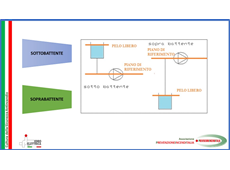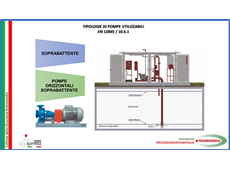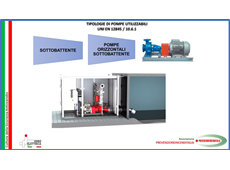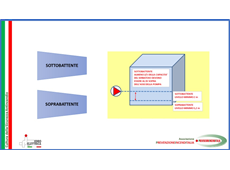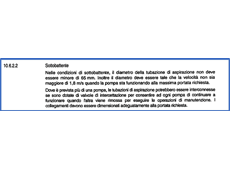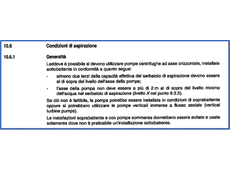Our expert responds #20
QUESTION
Could you explain to me what the definitions are, according to the current fight-fighting standards, for SUCTION LIFT and POSITIVE HEAD?
ANSWER
The standard to refer to, is of course UNI EN 12845:2020 in particular point 10.6.1, where it talks about the suction conditions

And point 10.6.2, to be precise, points 10.6.2.2. (suction lift) and 10.6.2.3. (positive head)

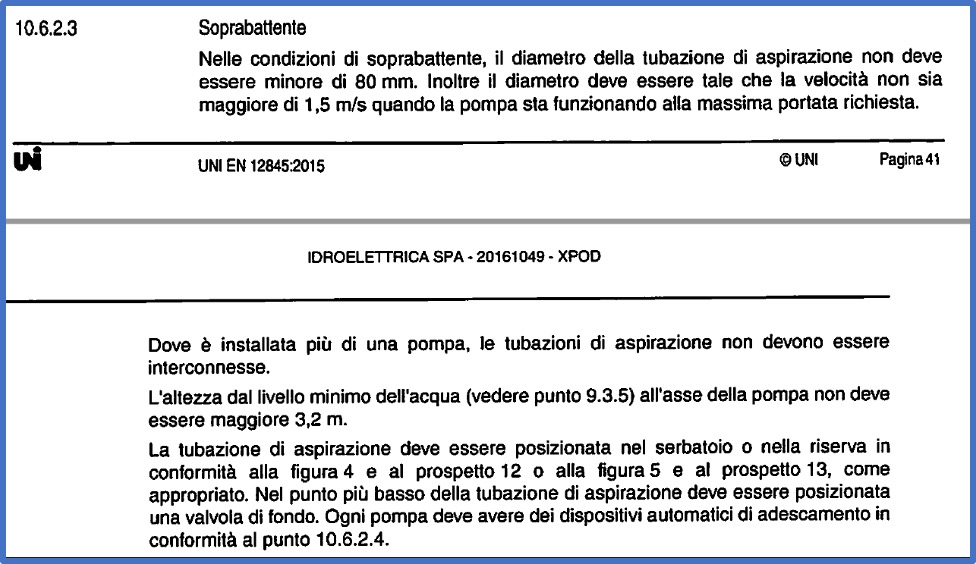
In addition, chapter 8 of UNI/TR 11438:2016 is also dedicated to the issue.
Starting from the basic condition shown in the figure below, where the reference plane is the horizontal one that passes through the centre of the pump’s suction mouth, the SUCTION LIFT and POSITIVE HEAD hydraulic conditions are easily identifiable.
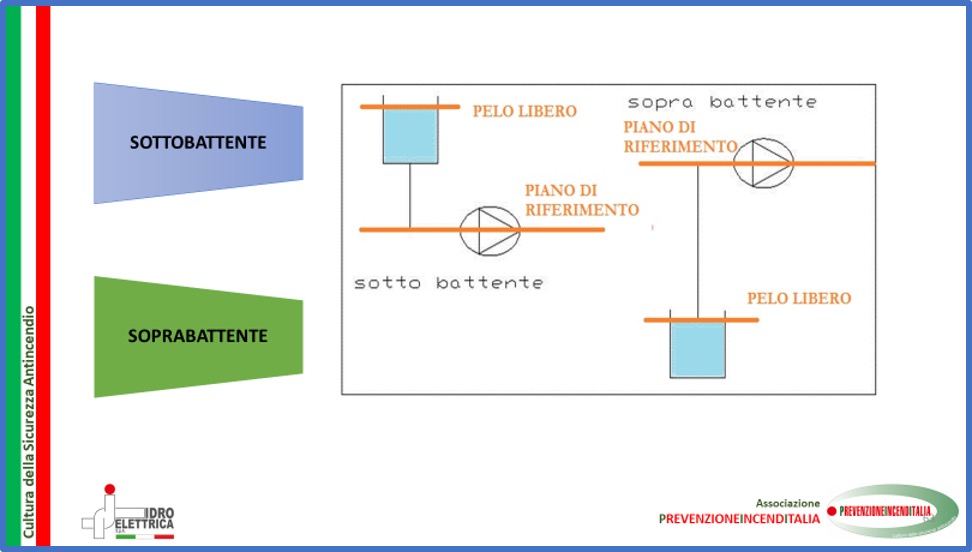
- The first is intrinsically safe, since the pump is always UNDER the free surface of the water and therefore is always subjected, in suction, to a favoUrable energy condition, having available both the contribution of atmospheric pressure, and that of gravity. NPSHd values are usually always > 10.33 m.c.a.
- The second, however, is linked to some factors that strongly discourage its use. First of all, the pump is to have available, in suction, only the energy deriving from atmospheric pressure. Therefore, NPSHd values normally much lower than 10.33 m.c.a. The diagram provides that the suction pipe, in order to allow the water to rise, is subjected to a vacuum, compared to the atmospheric pressure itself.
This implies that any connection present (flanged, threaded) is a possible source of air inlet. Given that the pressure inside the pipe is much lower than that found outside. If the vacuum then reaches the value of the vapour pressure, it would boil water at room temperature with the consequent creation of a two-phase fluid, which when entering the pump, would prevent it from providing the expected performance and would result in damage. Finally, the suction pipe can remain full, only if it is equipped with a foot valve. The malfunction of this component (leakage), would result in the emptying of the pump and the suction pipe, up to the level of the free water. The consequence would be the impossibility of the pump to provide the design Q/H. -
Therefore, the standard requires that the condition of SUCTION LIFT be preferably used, with the following limits:
- At least 2/3 of the tank capacity must be above the pump axis
- The minimum level cannot be below the pump axis for more than 2 metres
- If the minimum level is below the pump axis, a foot valve must be mounted
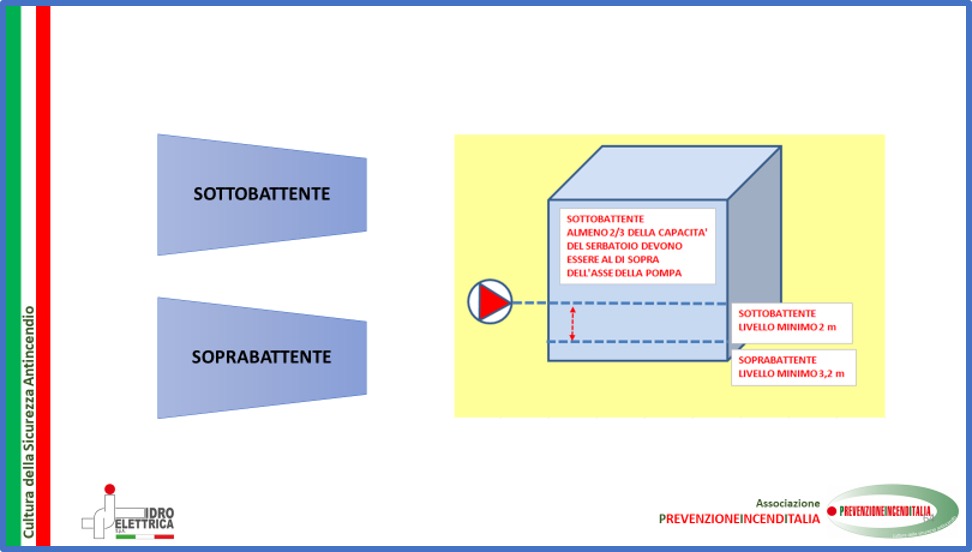
Therefore, in the case of SUCTION LIFT, the foot valve is not only required, but the limit distance between the pump axis and the free water is 3.2 m.
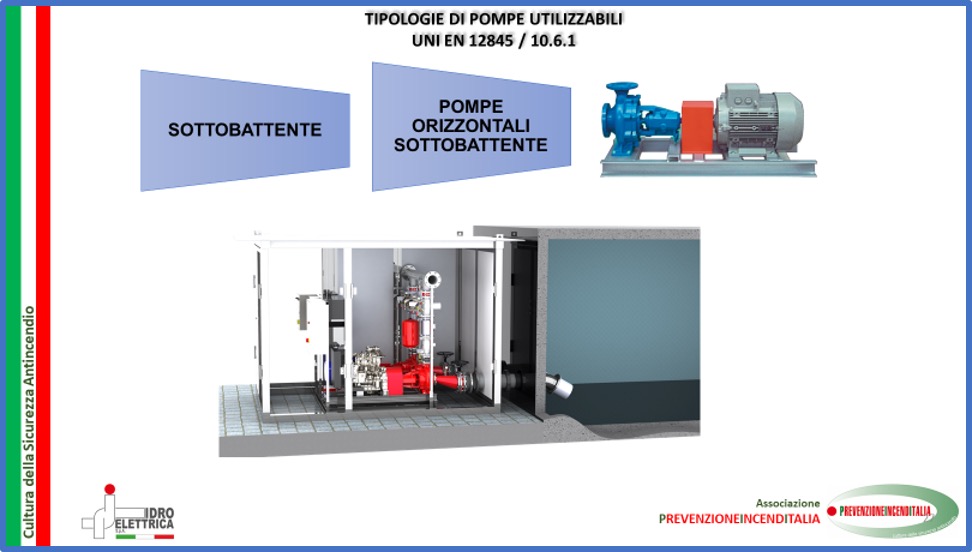
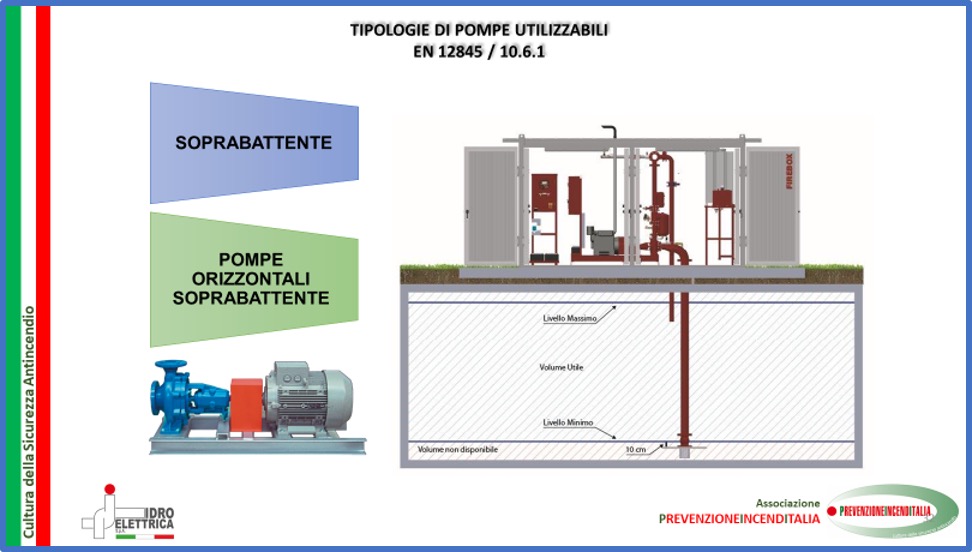
Learn more
- The importance of NPSH for the correct choice of pumping systems
- Type of pumps that can be used in fire-fighting systems


